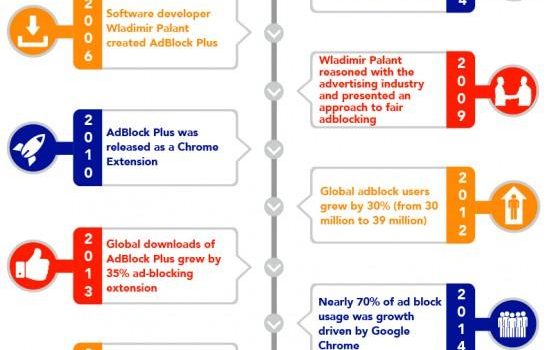Evolution of Ad-Blocking Browsers on Smart Devices
Smart devices are now the front runners since browsing the web too has gone mobile. The likes of Smartphones, iPads, tablets and other portable devices have resulted in a year-over-year increase in mobile web users, but has also reported a serious issue that hampers seamless browsing – ads. If open web has to survive then this issue needs to be addressed properly and promptly. It’s no wonder then that the usage of ad-blocking browsers is gaining mass acceptability at a rapid pace.
According to a research published by PageFair, there are around 1.9 billion Smartphone users around the world as of now, out of which 22% or 419 million people have already embraced some form of ad-blocking on their devices. Out of the 419 million, 409 million users have installed ad-blocking browsers on their smart devices. The surge hasn’t even neared its peak yet and we will see the rise of ad-blocking browsers very soon. The trend indicates that almost 90% users are new at ad-blocking browsers and this clearly reflects that people are sick and tired of seeing ads on their screens while browsing.
Many big names have added ad-blocking features to their browsers and bettered them overtime with the help of user feedback. The most annoying reason for using an ad-blocker, as reported by users, was the use of additional bandwidth by the ads. Majority of the Smartphone owners have limited data package and these ads consume more bandwidth then the page itself. Furthermore, a security risk is also associated with these ads since malwares and viruses are injected in the devices using ads. Also, viewing the content on smart devices becomes troublesome due to these ads. Some of them work fine on desktop but they are not optimized for Smartphones.
Surprisingly, it seems that the Asia-Pacific region has taken the lead in terms of opening their digital doors for ad-blocking browsers. A staggering 36% of ad-blocking browser users are from Asia Pacific. North America and Europe, on the other hand, have around 14 million monthly users of ad-blocking browsers.
Realizing the need and the opportunity to have the first mover advantage, some of the biggest names in the tech industry such as Opera, Firefox and Microsoft have already introduced their solutions – however, Apple was the pioneer in this race too.
And it seems like ad blockers are hitting where it hurts the most. According to the same PageFair research, advertisers have already suffered a loss of around $21.8 billion in revenue in 2016 alone, and this figure is expected to grow further as the year comes to an end. Users are employing ad-blocking browsers and apps to protect them from digital headaches aka video and graphical ads, and this has turned the marketing and advertising industry almost upside down.
Seemingly, the browsers are now equipped with ad blockers, but in a recent trend some VPN service providers have also started assembling ad blocking service, but for now we can only find this available for desktop. Well, VPN service providers may take a while competing in the smart devices segment, but they have taken the initiative to start the journey. Anyhow, the earnings have already been disturbed by VPN service providers as they encourage unethical measures and with ad blockers, they will surely serve convenience to users while browsing but the advertising industry won’t be pleased.
















